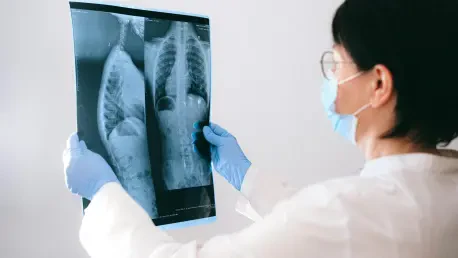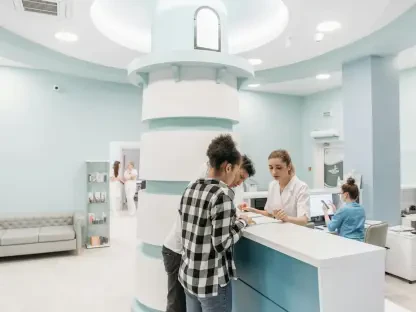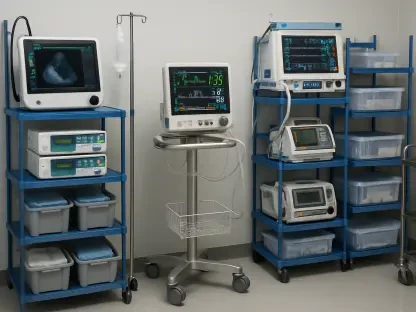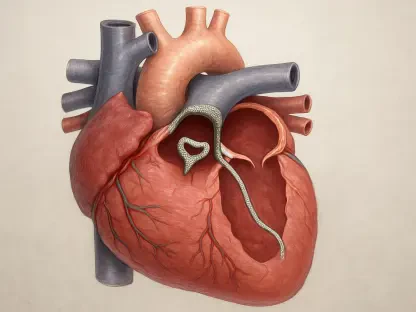The Belgian Medical Imaging Platform (BELMIP) is leading an ambitious initiative aimed at revolutionizing radiology practices in Belgium by integrating evidence-based guidelines into clinical workflows. This effort seeks to address the increasing number of computed tomography (CT) scans performed in the country and improve adherence to clinical imaging guidelines. By embracing technological advancements and fostering collaboration among various stakeholders, BELMIP’s initiative promises to enhance the appropriateness and justification of radiological referrals. The platform unites key sectors in healthcare, including the Federal Public Service for Public Health, the National Institute for Health and Disability Insurance, and the Federal Agency for Nuclear Control, with the goal of establishing a seamless clinical decision support system.
Clinical Decision Support Systems for Better Referrals
Objectives and Implementation
The primary goal is to create a digital referral prescription system for radiology, integrated with a government-funded prescription search support (PSS) platform. This system is designed to streamline radiology referrals across Belgium, connecting hospitals, general practitioners (GPs), and radiology departments under a unified network. By embedding evidence-based guidelines within this network, medical professionals are better equipped to make informed decisions, ensuring patients receive the most suitable radiological examinations at the right time. The initial phase involves pilot projects in 2026 to fine-tune the system and adapt it to the needs of the clinical environment.
The mandatory use of PSS is a cornerstone of the initiative, enabling systematic data collection and analysis of referral practices. This evidence-driven approach aims to enhance patient safety and improve the quality of care by ensuring that all radiological examinations are justified and necessary. The platform’s capability to collect and evaluate data will allow for continuous monitoring and refinement of referral practices, ultimately reinforcing the integrity of radiological services across the nation. Through pilot testing, BELMIP intends to gather valuable insights to optimize the system’s integration with existing clinical workflows.
Enhancing the Clinical Environment
Creating a positive clinical and educational environment is integral to the project’s success. By focusing on minimizing unnecessary imaging, the initiative underscores the importance of adhering to established guidelines while fostering a culture of continual learning and adaptation. This endeavor will involve systematically assessing the effectiveness of the PSS platform in altering referring physicians’ practices and refining imaging referrals. Furthermore, radiology departments will benefit from improved validation processes, ensuring that each medical imaging request is substantiated by sound clinical reasoning.
By integrating educational components into the system, healthcare providers will be encouraged to stay updated with the latest clinical guidelines, thus contributing to a higher standard of patient care. By demonstrating through empirical data how appropriate referencing can lead to better outcomes, this initiative not only seeks to refine the referral process but also aims to nurture a culture that values evidence-based practice in medicine. Ultimately, this approach promises to cultivate a collaborative environment among healthcare workers, leading to systemic improvements in the delivery of radiological services.
Addressing Resistance and Cultural Factors
Professional Autonomy and Challenges
Prof. Erik Ranschaert, a leader in medical imaging informatics, has identified professional autonomy as a significant barrier to adherence to evidence-based guidelines in Belgium. General practitioners, free to prescribe CT and MRI exams, often resist strict protocols, valuing their autonomy and fearing that adherence could compromise their clinical judgment. This resistance is compounded by the economic model of Belgian medicine, which ties income to productivity, making hospitals financially reliant on high-volume radiological output. Consequently, there is a cultural inclination towards favoring production over strict guideline adherence.
This situation creates tension between the need for innovation and the desire for professional freedom. The challenge lies in balancing these two aspects to ensure that evidence-based practices are embraced without stifling individual clinical expertise. Effective change management and resource allocation are critical to overcoming these challenges, as is fostering a sense of ownership among physicians. By involving stakeholders in the development and implementation process, BELMIP aims to ensure a smoother transition and widespread adoption of the new system.
Strategies for Overcoming Resistance
Engaging referring physicians from the outset is imperative for the successful implementation of the new clinical decision support system. Strategies designed to foster bottom-up engagement include workshops, continuous professional development opportunities, and transparent communication about the system’s benefits. Involving physicians in the customization of the PSS platform can also foster a sense of ownership, increasing the likelihood of its acceptance and utilization. This collaborative approach encourages practitioners to view the system as a tool that enhances, rather than restricts, their clinical autonomy.
By addressing concerns and demonstrating the tangible benefits of evidence-based guidelines in improving referral outcomes, stakeholders can be encouraged to participate actively in the system’s adoption. GPs are more likely to embrace the platform when they understand its potential to improve patient care and streamline their workflows. BELMIP’s commitment to addressing cultural and operational challenges is vital to ensuring the long-term success of the initiative, ultimately fostering an environment that values both clinical autonomy and adherence to evidence-based practices.
Broader Implications and Future Steps
Expanding Beyond Radiology
The potential benefits of this initiative extend beyond the realm of radiological practices, potentially transforming other healthcare sectors by optimizing resource utilization. For example, applying these frameworks to the prescription of antibiotics or clinical biology could lead to more efficient and judicious use of healthcare resources, reducing waste and promoting better patient outcomes. By leveraging similar evidence-based practices across various facets of healthcare, Belgium’s initiative could serve as a blueprint for a holistic approach to health service optimization.
The success of the BELMIP platform would pave the way for innovations that extend across the healthcare landscape, demonstrating the importance of building systems that foster cooperation, transparency, and accountability. As the platform gains traction, its methodologies could inspire healthcare sectors worldwide, illustrating the potential of technology-driven transformation to elevate patient care standards. This ambitious endeavor stands as a testament to the power of collaboration and innovation in reshaping health services to meet evolving patient needs.
Collaboration and Integration
The integration of the clinical decision support system into Belgium’s national eHealth platform marks a pivotal advancement in the project’s timeline, representing a crucial step in bridging gaps between healthcare institutions, software vendors, and national health authorities. However, integration poses significant challenges, particularly for smaller hospitals facing resource constraints. Developing collaborative solutions and innovative funding models could ease these burdens, ensuring that all healthcare facilities benefit equally from the advancements in digital health technology.
Crucial to the project’s success is fostering clinician adoption and participation. Systems that offer seamless, non-intrusive support to referrers are more likely to gain traction, facilitating comprehensive integration with electronic health records. Ensuring clinicians are well-informed about the system’s advantages, paired with early training initiatives, is vital for mitigating potential resistance. By aligning the initiative with regulations such as EURATOM 2013/59 and leveraging the support of stakeholders like BELMIP, the project stands to make a lasting impact on radiology practices, paving the way for enhanced patient outcomes and system efficiency.
Conclusion: A Path Forward
The initiative aims to establish a digital referral prescription system for radiology connected to a government-backed prescription search support (PSS) platform. This system intends to unify radiology referrals across Belgium by bringing hospitals, general practitioners (GPs), and radiology departments into a single network. Integrating evidence-based guidelines allows medical professionals to make well-informed decisions, ensuring patients undergo appropriate radiological procedures. The project will start with pilot tests in 2026, helping customize the system to suit clinical requirements.
Key to this initiative is the compulsory use of PSS, facilitating systematic collection and analysis of referral practices. This evidence-led methodology seeks to boost patient safety and care quality by ensuring that radiological procedures are essential and justified. The platform’s data analysis capabilities enable continuous oversight and enhancement of referral practices, strengthening the quality of radiological services nationwide. Through pilot implementations, BELMIP aims to extract valuable insights for optimum integration with current clinical workflows.









